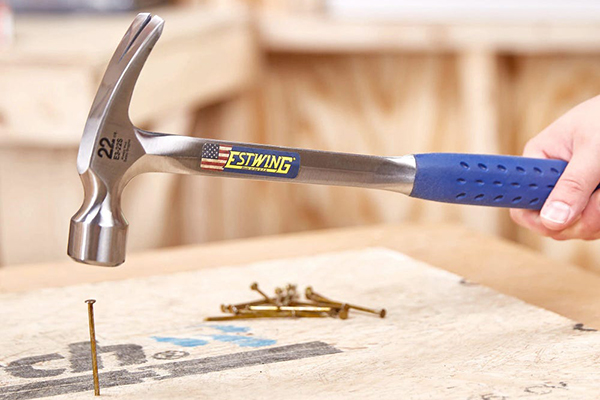The Carpenter's Tool of Choice: Unveiling the Ubiquitous Claw Hammer
In the realm of construction, few tools hold as much significance as the hammer. This essential tool has been a staple in the carpenter's arsenal for centuries, serving as a versatile and dependable companion for shaping, driving, and removing nails. While a variety of hammers exist, each tailored for specific tasks, the claw hammer stands out as the cornerstone of a carpenter's toolkit.

Understanding the Claw Hammer: A Versatile Design
The claw hammer, also known as a framing hammer, is characterized by its curved claw on the opposite side of the striking face. This claw serves a dual purpose, allowing carpenters to pry out nails and secure boards. The hammer's striking face, typically made from steel, is designed to deliver focused impact for driving nails into wood. The hammer's handle, often made from wood or fiberglass, provides leverage and control during use.
Reasons for the Claw Hammer's Dominance
The claw hammer's popularity among carpenters stems from its versatility and effectiveness in a wide range of tasks:
-
Nail Driving: The claw hammer's striking face is optimized for driving nails into wood, providing the necessary force and precision for secure fastening.
-
Nail Removal: The curved claw allows carpenters to easily pry out nails, making adjustments and repurposing materials a breeze.
-
Demolition and Leverage: The claw can also be used for light demolition tasks, prying apart boards and removing loose materials.
-
General Versatility: The claw hammer's ability to handle both nail driving and removal makes it a go-to tool for a variety of carpentry tasks.
Choosing the Right Claw Hammer: Size and Weight Matter
Selecting the appropriate claw hammer depends on the carpenter's individual preferences and the types of projects they undertake:
-
Size: Claw hammers come in various sizes, ranging from 10 to 28 ounces. Lighter hammers, such as 12-ounce models, are suitable for lighter tasks like trim work, while heavier hammers, such as 20-ounce models, are better suited for framing and heavier construction.
-
Weight Distribution: The weight distribution of the hammer affects its balance and ease of use. Some hammers feature forward-weighted designs for greater striking force, while others have a more balanced distribution for better control.
-
Handle Material: The handle material plays a role in comfort and durability. Wood handles are traditional and provide a natural feel, while fiberglass handles offer lighter weight and greater shock absorption.
Conclusion
The claw hammer, with its versatility, effectiveness, and adaptability, remains the carpenter's tool of choice. Its ability to handle a wide range of tasks, from driving nails to prying them out, makes it an indispensable companion in the construction world. As carpenters continue to shape and build our physical environment, the claw hammer will undoubtedly remain a cornerstone of their craft.
Post time: 11-24-2023





